I'd like to remove the labels for the facets completely to create a sort of sparkline effect, as for the audience the labels are irrelevant, the best I can come up with is:
library(MASS)
library(ggplot2)
qplot(week,y,data=bacteria,group=ID, geom=c('point','line'), xlab='', ylab='') +
facet_wrap(~ID) +
theme(strip.text.x = element_text(size=0))
So can I get rid of the (now blank) strip.background completely to allow more space for the "sparklines"?
Or alternatively is there a better way to get this "sparkline" effect for a large number of binary valued time-series like this?
